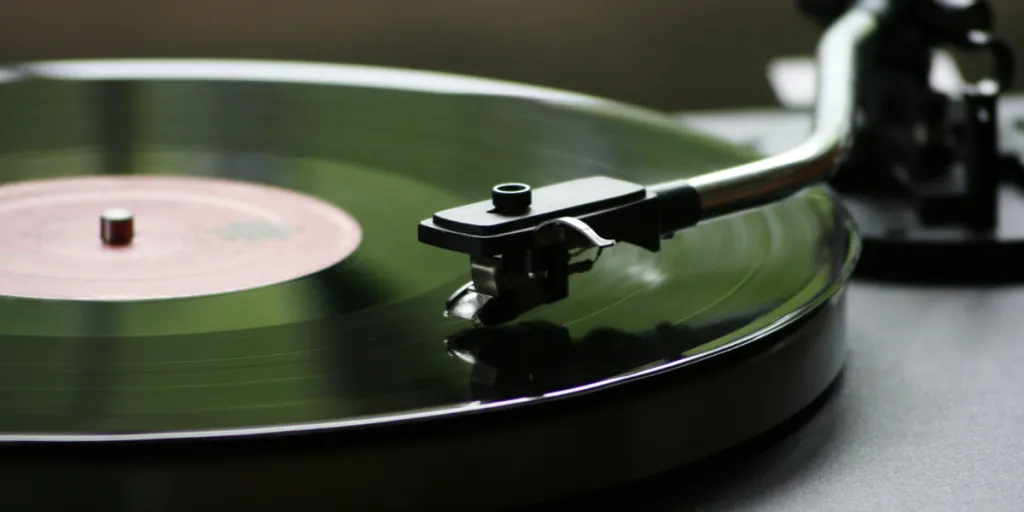Vinyl never truly went out of style; it simply took a backseat to a range of new mainstream products such as CDs and MP3 players. However, these days vinyl is experiencing a resurgence and is steadily growing in popularity, breathing new life into turntables among modern DJs and music enthusiasts.
Consumers looking to start their DJ journey will want the best tools for the job—and turntables might just be at the top of that list!
This article will highlight four quality turntable trends for DJs and music enthusiasts in 2023.
Table of Contents
Are turntables still profitable in 2023?
What are the differences between a turntable and a record player?
Four turntables with an appeal for DJs in 2023/24
Rounding up
Are turntables still profitable in 2023?
According to the most recent reports in 2022, the global turntable market achieved US$ 42.46 million and is projected to reach US$ 50.74 million by 2028 at a steady 3.01% compound annual growth rate (CAGR). The increasing trend of having a turntable at home and DJs at events spinning live music is the driving force behind the growth of this market.
While it’s not new, electronic dance music (EDM) has been steadily gaining popularity, attracting an ever-expanding fan base and increasing the turntable market’s revenue generation.
Thanks to the thriving DJ music culture in the U.S. and Canada, North America leads the market. The expanding music venue and concert scene also contribute positively.
What are the differences between a turntable and a record player?
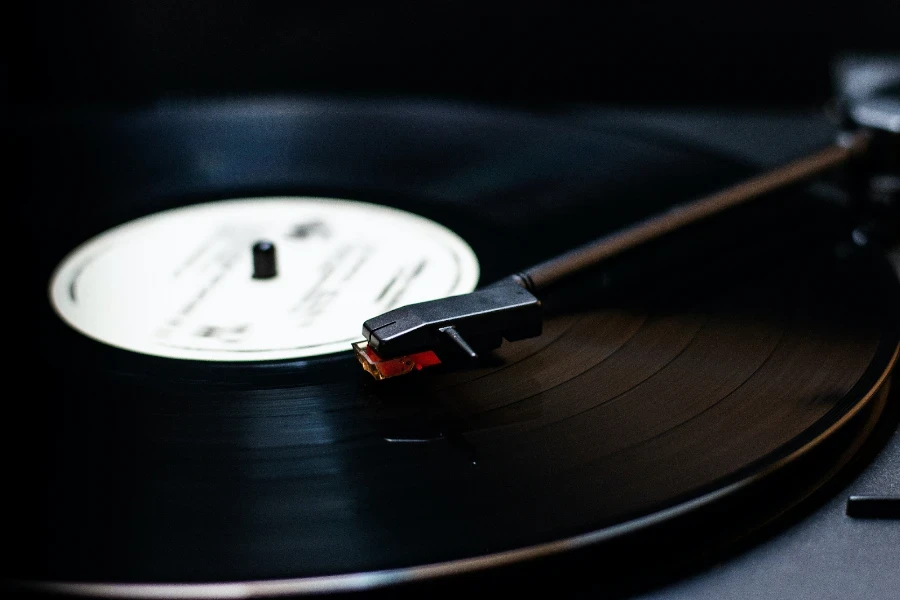
While many use “turntable” and “record player” interchangeably, they do actually differ. A turntable is part of a record player responsible for holding and spinning the record during playback.
In contrast, a record player combines a turntable with a built-in preamp, amplifier, and speaker for a more user-friendly experience.
Record players are all-in-one devices for listening, while turntables require additional equipment and are favored by those who want to customize their setup.
Four turntables with an appeal for DJs in 2023/24
Belt drive
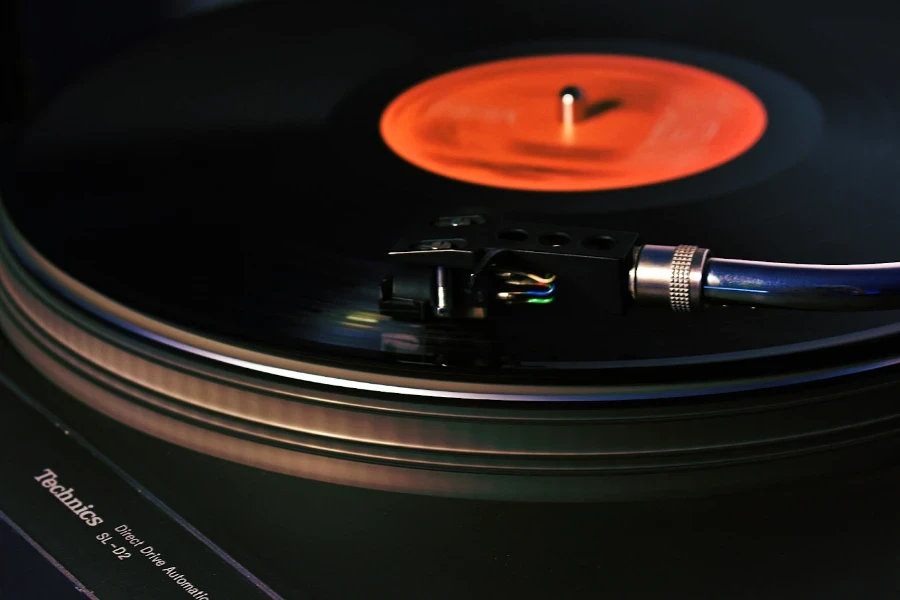
Consumers looking for convenient and casual listening at home or an easy way to digitize their vinyl collection can’t go wrong with belt drive turntables. They operate as their name suggests, employing a belt to rotate the turntable platter.
Usually, manufacturers position the motor to the side, using the belt to connect it to the turntable platter. Plus, the belt can rest on the platter’s outer edge or the inner planner holding the external one.
Many belt drive turntables are manual, meaning the user has to manually lift and place the tonearm onto the record—lifting it at the end of the side or album. Some models also feature semi-automatic or fully automatic operation, where the tonearm automatically moves onto the record and lifts at the end.
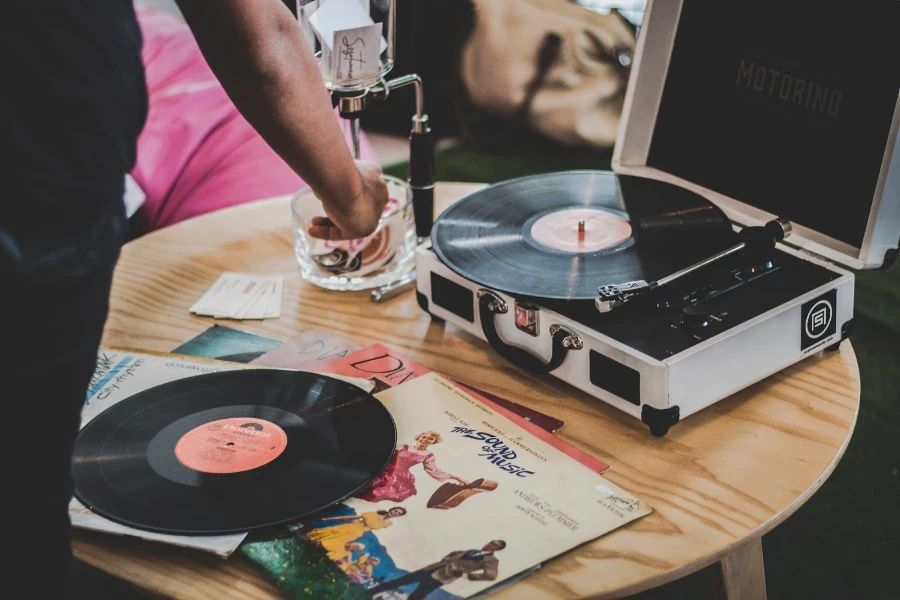
In addition, belt drive turntables are a favorite for audiophiles and vinyl enthusiasts who prioritize audio quality. The reduced motor noise and vibration result in a cleaner, more detailed sound reproduction, enhancing the user’s listening experience.
According to data from Google Ads, belt drive turntables target a niche market with an average of 1600 monthly searches.
Pros
- The elastic belt absorbs shocks and stops motor-generated vibrations from affecting the platter.
- Keeping the motor separate from the platter reduces noise transmitted to the tonearm.
- These turntables produce better sound due to reduced motor-related noise interference.
Cons
- Belt drive turntables have lower torque outputs.
- The rubber belt will wear down and need eventual replacement.
- Its lower torque is not powerful enough for DJ performances.
Direct drive
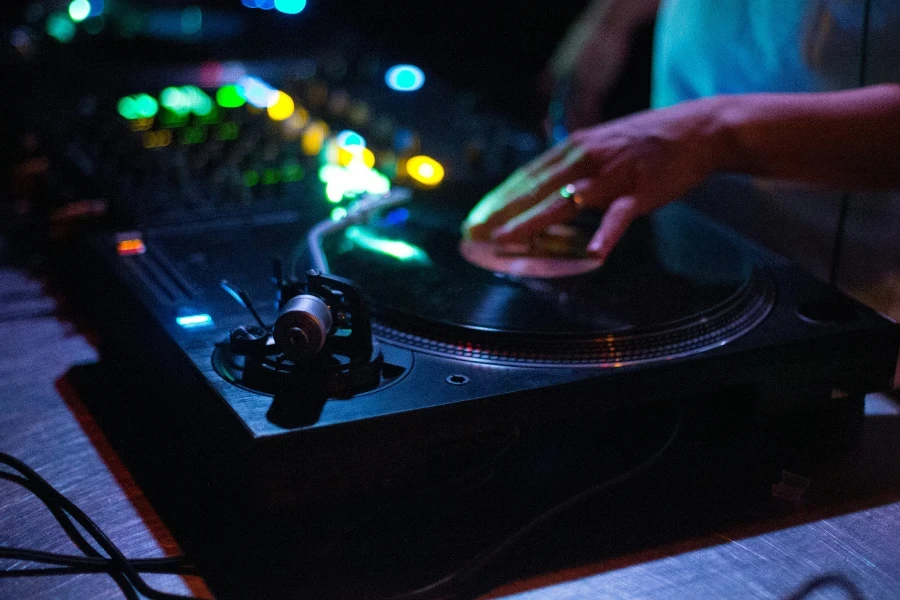
The direct drive turntable stands out as a trendy choice among DJs. Its motor, positioned directly beneath the platter, offers precise control and maintains consistent speed adjustments, making it exceptionally responsive and sensitive to a DJ’s needs.
A direct-drive turntable’s key feature is the motor’s direct coupling to the platter. As a result, its design connects the motor spindle directly to the center of the platter, eliminating the need for a transfer belt.
In addition, they offer precise speed control and stability, allowing for accurate playback at different RPM (revolutions per minute) settings like 33 1/3 and 45 RPM. Many direct-drive turntables also have a reverse play feature, which is helpful for specific DJ techniques.
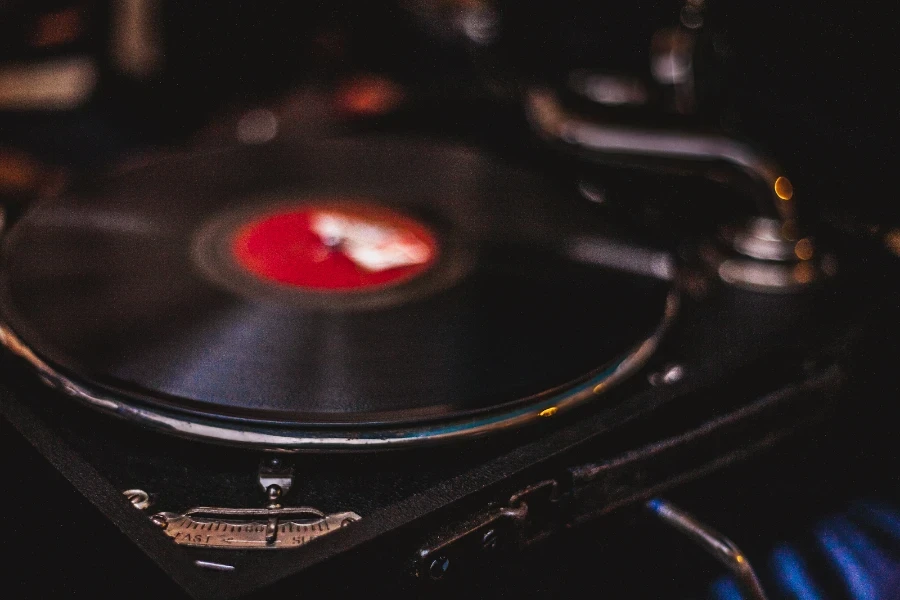
More importantly, the direct-drive mechanism is famous for its enhanced durability. Since its design has fewer moving parts, they’re less susceptible to wear and tear. Some audiophiles prefer these turntables for their accurate speed and low wow/flutter (variations in speed).
Direct-drive turntables outshine their belt-drive counterparts in popularity, as search data shows. According to Google Ads, they receive a monthly search volume of 4,400 queries.
Pros
- These turntables boast superior torque and deliver unwavering speed consistency. The elevated torque level reduces sensitivity to external forces, such as those from the stylus or the user’s hand.
- Its increased torque boosts platter acceleration, allowing it to reach a steady speed quicker.
- Spinning the platter backward to create unique sound effects is easier with direct-drive turntables.
Cons
- The motor’s direct connection to the platter can produce undesirable vibrations, impacting sound quality. However, most variants resolve this issue by employing shock absorbers between the platter and the motor.
Idler wheel
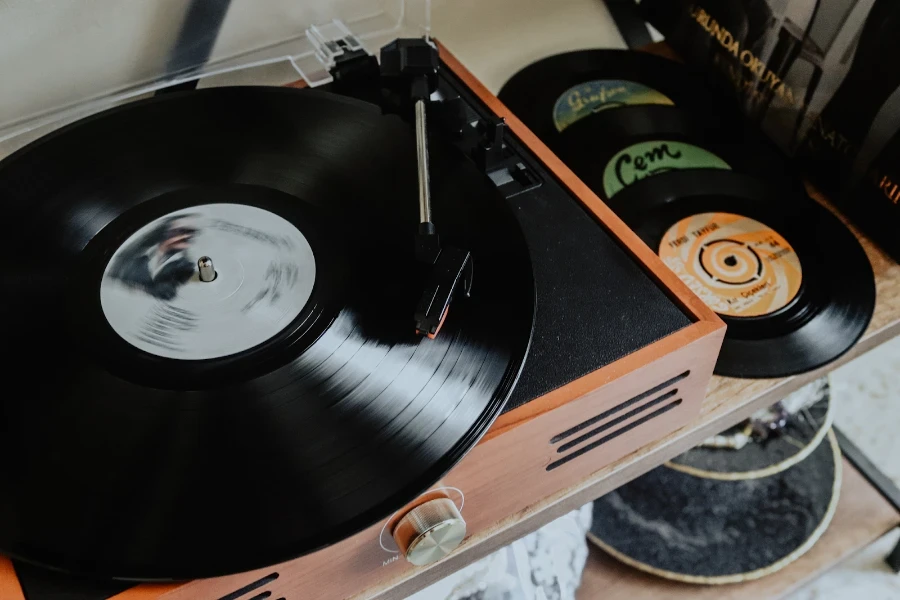
Idler wheel turntables, often called rim-drive turntables, represent a distinct category that enjoyed significant popularity during the mid-20th century, mainly from the 1950s to the 1970s. However, they reemerged in 2023, albeit less popular than their belt and direct drive counterparts.
As per Google Ads data, idler wheel turntables receive an average of 480 monthly searches. This indicates a modest level of interest within a niche audience.
Unlike modern belt-drive or direct-drive turntables, idler wheel turntables have a unique way of spinning the platter. They use a rubber or elastomeric wheel, called an idler wheel, placed between the turntable’s motor and the platter to achieve their rotation.
In idler wheel turntables, consumers can control the speed by either changing the idler wheel’s size or shifting where it touches the platter. Plus, they can get two speeds (usually 33 1/3 RPM for LPs and 45 RPM for singles) when connecting the idler wheel to different platter sections.
Pros
- Idler wheel turntables have similar high torque outputs to drive belts.
Cons
- Its design requires many moving parts to perform one task, increasing the possibility of wear and tear.
- Idler wheel turntable parts are hard to find, making replacement difficult.
Bluetooth turntable
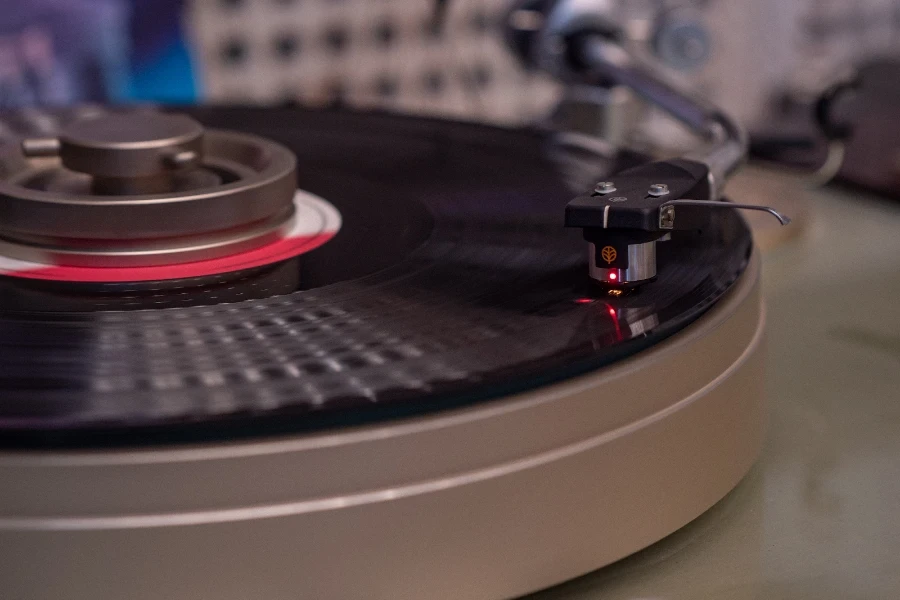
At its core, it operates much like a traditional turntable. This Bluetooth turntable consists of a rotating platter where vinyl records are placed, a tonearm with a stylus (needle) that tracks the record’s grooves, and a cartridge that converts the analog audio signals from the stylus into electrical signals.
Its ability to connect wirelessly to other devices, like Bluetooth-enabled speakers, headphones, or audio receivers, sets the Bluetooth turntable apart. With it, consumers can stream audio from their vinyl records without physical cables.
Bluetooth turntables often have other modern features, like built-in speakers, USB connectivity for digitizing vinyl records, and even different playback speeds (e.g., 33 1/3 RPM, 45 RPM, and 78 RPM). Some models may also include a preamp, allowing you to connect directly to a traditional stereo system.
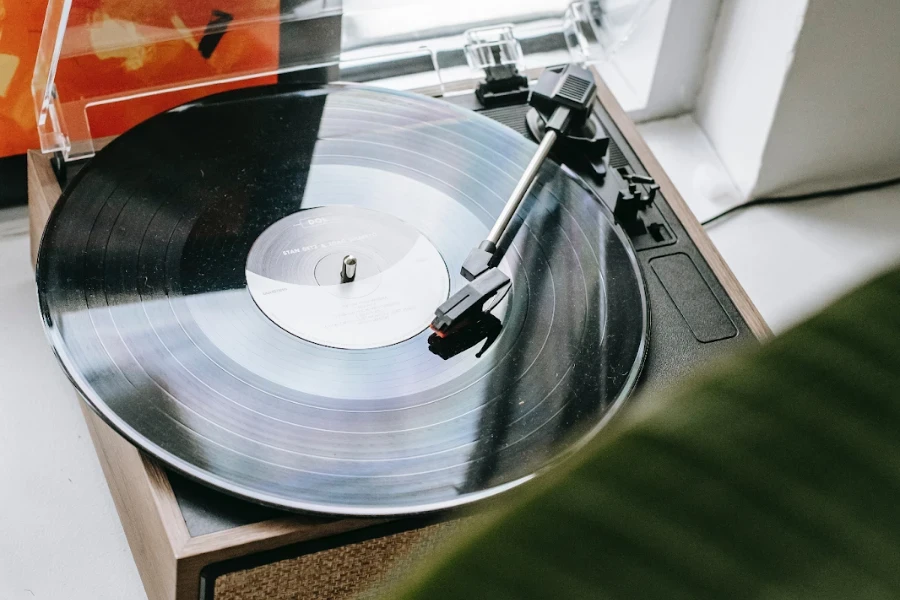
The best part is these Bluetooth turntables are the most popular options in 2023. According to Google Ads, Bluetooth turntables attract 49500 average monthly searches—way more than the other devices on this list.
But that’s not all. Search interest witnessed a 50% uptick to 740000 in August before a second 30% boost, settling in at 90500 searches in September.
Pros
- Bluetooth turntables are incredibly convenient to use.
- They’re also flexible and don’t require cables, allowing users to place them anywhere in a room or space.
- Some Bluetooth turntables are compact and lightweight, increasing their portability.
- Many Bluetooth turntables come with USB ports, allowing users to digitize their vinyl records.
Cons
- Sound quality may not be as excellent as wired turntables.
- Audio lag may be an issue for audiophiles.
Rounding up
Despite predictions of the vinyl record’s demise, turntables made a big comeback in the 2000s—and have endured till now with more vinyl records leaving production houses. Most importantly, music enthusiasts with extensive collections and DJs cherish turntables, helping to keep their market profitable.
Consumers who prefer a vintage style may choose belt-drive and idler wheel turntables. On the other hand, drive-belt and Bluetooth turntables offer a more modern appeal and are more popular among DJs.
Focus on these four turntable trends to attract more consumers and sales in 2023.
